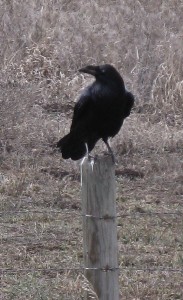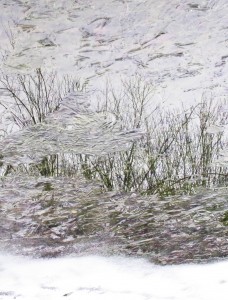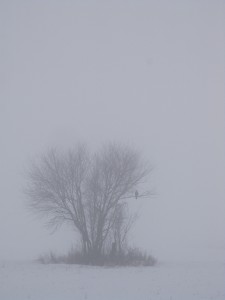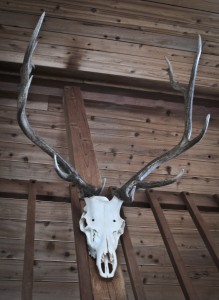
Last fall, when Ted had a successful hunt and filled our freezer with elk meat, we wanted to do something to honor the magnificent animal that would provide us with a year’s sustenance. We were not interested in making a trophy of it, that is not the spirit with which Ted hunts, so a head mount was out of the question. Instead we took the skull to Big Sky Beetleworks where it was cleaned by a colony of dermestid beetles.
Dermestid beetles are a species of carrion beetles used by museums, taxidermists, schools and wildlife agencies to clean bones. Gary Haas, who runs Big Sky Beetleworks was kind enough to let me watch the beetles in action. He took me into a room which is temperature controlled–the beetles can’t fly below 80 degrees–and protected from the infestations of other insects, such as spiders which readily feed on the beetles. 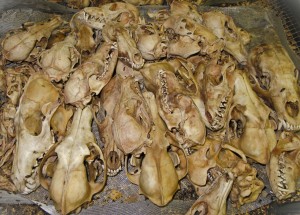
The tiny bugs were swarming over several trays of small mammal and bird skulls, some provided by trappers and others by wildlife agencies. The rotted flesh and ammonia smell was heady. Haas doesn’t have a sense of smell anymore, but the stench stayed lodged in my nostrils for days. Still, I couldn’t resist the chance to see the beetles at work.
Three months later our elk skull was finished. People have always had a fascination with skulls and bones. As Mark Elbroch says in his guidebook, Animal Skulls, “The diversity and complexity of life is ever apparent in the equally varied and beautiful forms that are animal skulls. For skulls are sculptures in a vast array of shapes and textures that excite and inspire our imagination.” Ever since Neanderthals, people have used skulls in rituals and ceremonies. Artists have used the sculptural quality of bones in their work, probably most famously Georgia O’Keefe, whose bone paintings from the desert country first initiated me into an appreciation of bone’s beauty. She said, “When I found the beautiful white bones on the desert I picked them up and took them home…I have used these things to say what is to me the wideness and wonder of the world as I live in it.”
In many medieval and renaissance paintings, a human skull is depicted as a “memento mori”, a reminder of our own mortality and impermanence. For Ted and me, the elk skull which hangs above the entrance to the kitchen is a daily reminder of our dependence on the earth for our very survival, the interconnectedness of all creatures and our gratitude to this elk for our daily nourishment. Looking at the skull I silently repeat the zen Buddhist meal gatha:
First, Seventy two labors brought us this food. We should know how it comes to us.
Second, as we receive this offering,we should consider whether our virtue and practice deserve it.
Third, as we desire the natural order of mind to be free from clinging, we must be free from greed.
Fourth, to support our life, we take this food.
Fifth, to attain our way we take this food…
Like this:
Like Loading...

